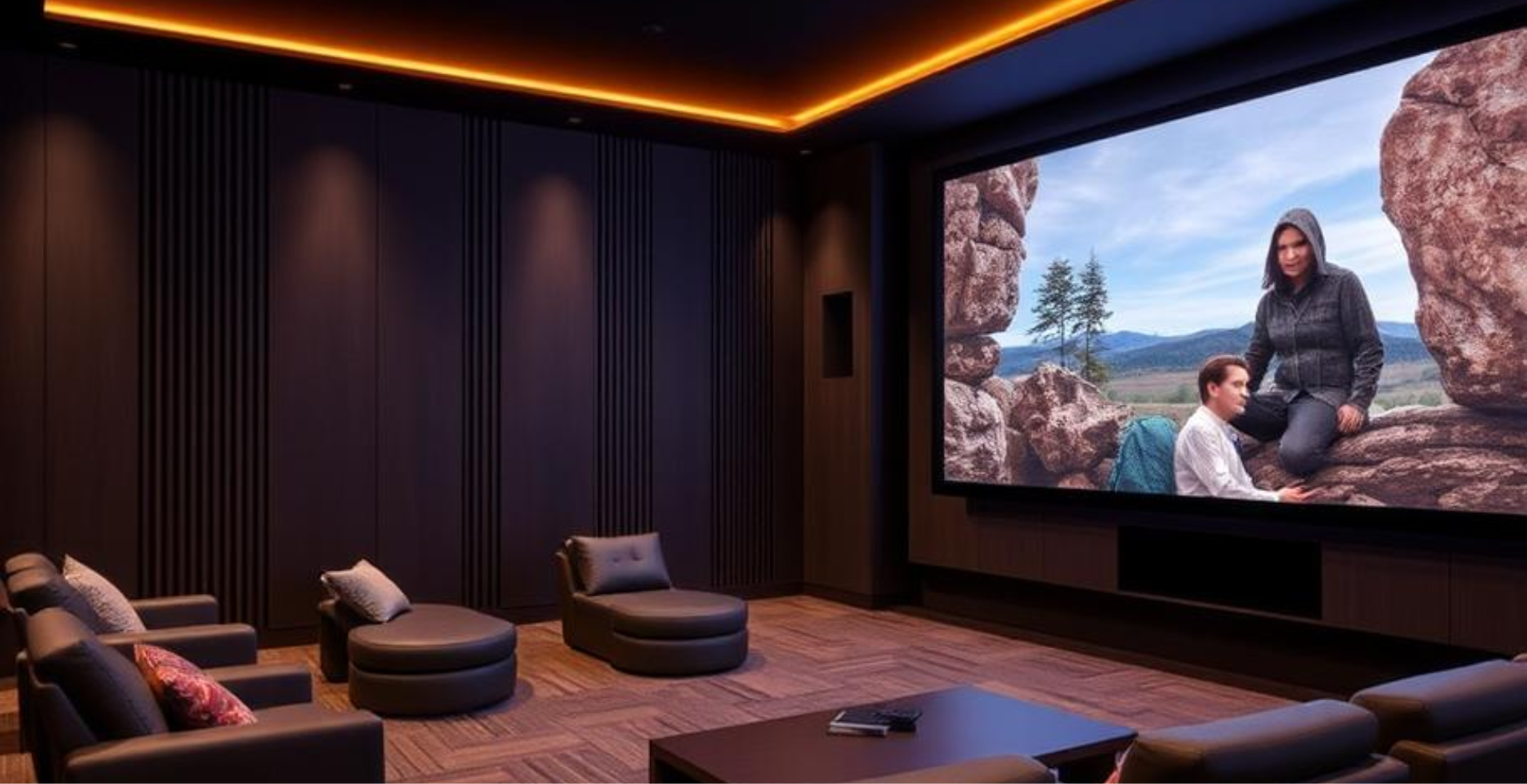The Human-Centered Design Philosophy
where our homes are not just places to live but sanctuaries for our well-being, the design of home cinemas has evolved beyond merely setting up a screen and speakers. Today, interior designers are embracing a human-centered approach that considers the physical, mental, and emotional needs of people. This approach ensures that a home cinema is not only a technological marvel but also a space that nurtures our overall quality of life.
Designing Home Cinemas for Today: A Human-Centered Approach
Human-centered design focuses on creating environments that enhance the user experience by addressing various aspects of human needs. In the context of home cinema, this philosophy means designing spaces that go beyond functionality to promote comfort, health, and emotional well-being.
- Physical Comfort and Ergonomics
The first and most immediate concern in home cinema design is physical comfort. An enjoyable cinematic experience begins with seating that supports and comforts viewers during long movies. High-quality seating options such as recliners, ergonomic loungers, and modular seating allow for customization to fit individual preferences. Adjustable features like lumbar support and reclining mechanisms ensure that viewers can find their ideal position.
Acoustics play a crucial role in physical comfort as well. Proper soundproofing and acoustic treatment minimize external noise and enhance sound clarity, creating a more immersive experience without straining the ears. Additionally, thoughtful placement of speakers and sound-absorbing materials can prevent sound distortion and ensure even sound distribution throughout the room.
- Mental Well-Being and Stress Reduction
The home cinema should serve as a sanctuary from the daily grind. Designers can integrate features that promote mental well-being and reduce stress. For instance, the use of soft, ambient lighting can create a soothing atmosphere that complements the cinematic experience. Adjustable lighting systems, including dimmable LEDs and smart lighting options, allow viewers to tailor the ambiance to their mood and the nature of the film.
Furthermore, incorporating elements like acoustic panels and noise-canceling technologies helps in creating a peaceful environment, free from distractions. By minimizing external noise and optimizing sound quality, the home cinema becomes a retreat where viewers can escape into a world of relaxation and entertainment.
- Emotional Connection and Personalization
Creating an emotionally resonant home cinema involves more than just aesthetics; it’s about personalizing the space to reflect the tastes and preferences of its users. Designers can achieve this through customized decor, color schemes, and thematic elements that align with the homeowners’ personalities and interests.
Personal touches such as family photos, memorabilia, or favorite movie posters can make the space feel uniquely theirs. In addition, designing flexible layouts that accommodate social gatherings or quiet viewing can enhance the emotional connection to the space. For example, a room that easily transitions from an intimate movie night for two to a vibrant gathering for friends and family caters to diverse emotional needs and social occasions.
Addressing Modern Lifestyle Needs
Today’s home cinema is a reflection of contemporary lifestyles, which increasingly value flexibility, technology integration, and wellness. Designers are adapting to these needs by incorporating several key features:
- Multi-Functional Spaces
Modern home cinemas often serve multiple purposes, from movie watching to gaming and even exercise. By incorporating versatile furniture and technology, designers can ensure that the space adapts to various activities. For instance, modular seating that converts into lounge beds or a hidden projector that can be stowed away when not in use adds functionality and maximizes space utilization.
- Technology Integration
Seamless integration of technology is vital for enhancing user experience. Smart home systems that control lighting, temperature, and audio-visual equipment contribute to a more intuitive and enjoyable environment. Voice-controlled assistants and automated settings allow users to adjust their home cinema experience with ease, providing convenience and reducing the need for manual adjustments.
- Wellness and Relaxation
Incorporating elements that support physical and mental well-being is increasingly important. Air purification systems, soothing color palettes, and natural materials like wood and stone can enhance the overall ambiance of the home cinema. Additionally, integrating features such as aromatherapy diffusers or heated seating can create a more luxurious and comforting environment.
“The evolution of home cinema design reflects a broader understanding of how our living spaces impact our lives. By adopting a human-centered approach, interior designers are creating home cinemas that address the physical, mental, and emotional needs of users. These spaces are no longer just about high-definition visuals and surround sound; they are about comfort, relaxation, and personal connection.”satisfied client

